Tag archives: food science
Putting a stamp on gravitational waves, LEGO’s Women of Nasa, physicist competes in bake-off
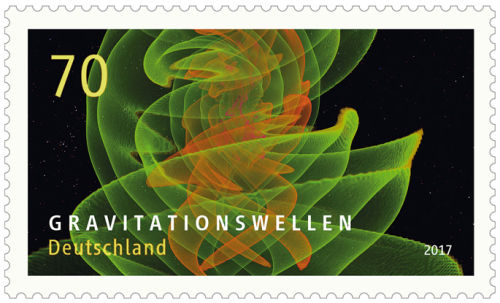
Cosmic delivery: German stamp commemorates gravitational waves. (Courtesy: German Federal Ministry of Finance)
By Michael Banks and Hamish Johnston
For those wanting to add a physics twist to your season’s greetings, you now can thanks to Germany’s Federal Ministry of Finance. It has announced two new stamps that will go on sale in the country on 7 December. A €0.40 stamp will feature the European Space Agency’s Gaia satellite and will be the first German stamp to include a metallic coating. Gaia was launched in 2013 to measure the positions and distances of astronomical objects, including stars, planets as well as comets. The ministry also announced a €0.70 stamp that depicts the gravitational waves that emerge from the collision of two black holes. The simulation was made by researchers at the Albert Einstein Institute (AEI) in Potsdam, Germany. “The ministry did not announce whether letters equipped with the new gravitational-wave stamp will be transported at the speed of light,” states an AEI press release.
View all posts by this author | View this author's profile
Physics of food – the November 2016 issue of Physics World is now out
By Matin Durrani
If you love crisps – and frankly who doesn’t? – you’ll relish the cover feature of the latest issue of Physics World, in which features editor Louise Mayor tours the world’s biggest crisp factory at Leicester in the UK to see how physics is improving production of this yummy salty snack. The issue is now live in the Physics World app for mobile and desktop and will also be made available on physicsworld.com later this month.
Elsewhere in this special issue on physics and food, you can find out how electric fields could help to cut the fact from chocolate and discover why sound holds the key to our appreciation of what we eat.
You can also see how physicists – being masters of data-gathering, modelling and simulation – are ideally placed to develop products that are healthier, more nutritious and make more of our resources. Find out too how soft-matter physicists are crafting “functional” foods that promote feelings of fullness and satisfaction.
View all posts by this author | View this author's profile
Killer asteroid bust-up, exposing academic plagiarism, #IAmAPhysicist and more
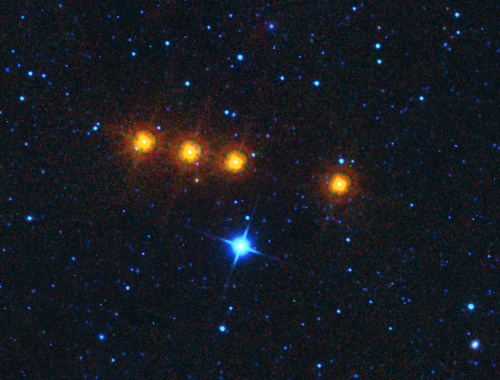
Time-lapse image of the asteroid Euphrosyne as seen by NASA’s WISE space telescope, which is used by NEOWISE to measure asteroid sizes. (Courtesy: NASA)
By Hamish Johnston
First-up in this week’s Red Folder is a tale of killer asteroids, hubris and peer review from the Washington Post. The science writer Rachel Feltman has written a nice article about a claim by physicist-turned-entrepreneur Nathan Myhrvold that NASA’s research on asteroids that could potentially collide with Earth is deeply flawed. On Monday, Myhrvold posted a 111-page preprint on arXiv that argues that asteroid radii measured by NASA’s NEOWISE project are far less accurate than stated by NASA scientists. What’s more, Myhrvold seems to suggest that NEOWISE scientists have “copied” some results from previous asteroid studies.
Myhrvold began his career as a theoretical physicist and, after a stint as Microsoft’s chief technology officer, founded an intellectual-property firm. He has never worked in the field of asteroids, yet he has taken great exception to some of the physics and statistical analysis underlying the NEOWISE results. His paper has been submitted to the journal Icarus, but has not yet passed peer review – unlike the NEOWISE results. In her article, Feltman ponders why Myhrvold is actively promoting his controversial work – he was featured in a New York Times article on Monday – before it has passed peer review. She also speaks to several NEOWISE scientists, who are not amused.
The field that could improve your research ‘impact’
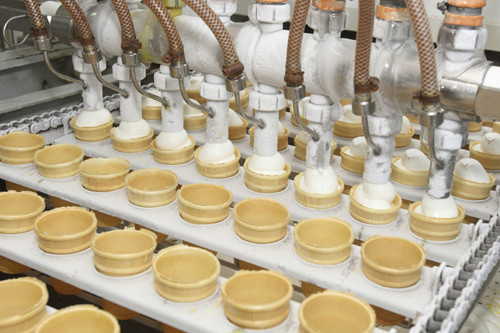
Where physics meets food: preparation of ice-cream in a factory. (Courtesy: iStockphoto/Leonid Shcheglov)
By Matin Durrani
As Physics World editor, I spend most of my time covering science that I have never been involved in. I might write articles about astrophysicists, interview atomic physicists or edit features by particle physicists, but it doesn’t mean I’ve ever done any research in those fields.
It was therefore a pleasant change last Friday to attend a summit organized by the Institute of Physics, which publishes Physics World, on physics in food manufacturing. Back in the 1990s, I did a PhD with Athene Donald at the Cavendish Laboratory in Cambridge on the physical properties of mixtures of gel-forming biopolymers – materials that apart from being interesting from a fundamental point of view are also relevant to the food industry.
Many foods, after all, are complex, multicomponent mixtures – and if you can understand how they behave, then you can create foods that are healthier, cheaper and perhaps even tastier too.
How to cook the perfect steak, Bill Nye gets tangled about entanglement and the challenges of going to Mars
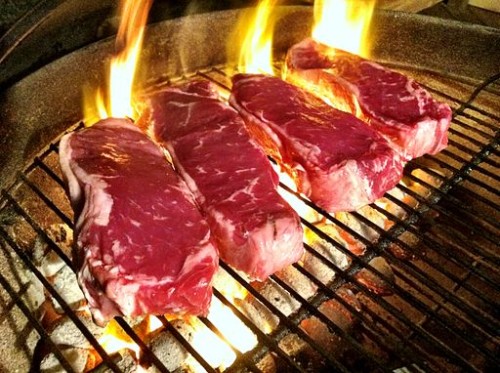
The wrong way: where is the liquid nitrogen and duck fat? (CC BY 2.0 _BuBBy_)
By Hamish Johnston
How do you cook the perfect steak? Materials scientist Mark Miodownik of University College London has the answer. To cook his medium-rare steak (pink in the middle with a seared coating on the outside), Miodownik first seals the steak in a vacuum bag and places it in a warm water bath until it reaches 55 °C. He then dips it in liquid nitrogen for 30 s to chill the outer layer without freezing the middle. If that wasn’t unconventional enough, he then throws it into a deep-fat fryer containing duck fat. The result? “A lusciously seared steak, medium rare all the way through. And not a pan in sight!” says Miodownik. The BBC has put together a nice animation of the recipe: “What’s the weirdest way to cook a steak?”.
Cutting the fat from chocolate
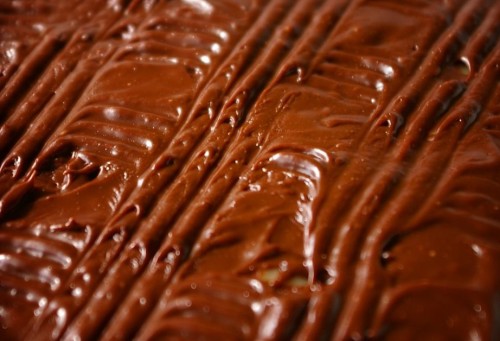
Go with the flow: physicist Rogjia Tao has a clever way to cut the fat in chocolate. (CC BY-SA 2.0/rore)
By Matin Durrani in Baltimore, Maryland, US
A couple of years ago my colleague James Dacey decided to give up eating chocolate, crisps, biscuits and cakes over Lent and it’s a virtuous – if very dull – decision I’ve been following every year since (even if James has long since strayed from the path of righteousness).
It was therefore with a dollop of smug satisfaction that I attended a talk at this year’s APS March meeting by Rongjia Tao – a physicist from Temple University in the US. He has developed a way of cutting the amount of fat in chocolate without, apparently, losing any of the taste.
Now, reducing the fat content in chocolate might seem straightforward – you just get rid of the fat, right? But it’s a harder problem than you’d think for chocolate manufacturers, who have to send liquid chocolate – a suspension of spherical cocoa particles in a melted fat of cocoa butter and other oils – down pipes and tubes.
How to make the perfect hollandaise sauce
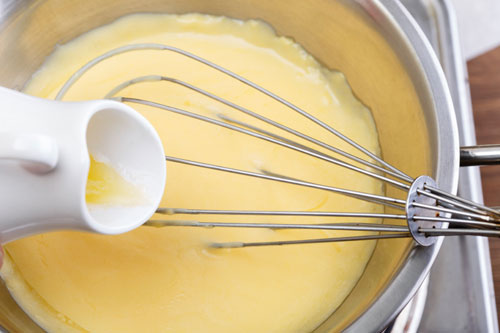
A scientific approach to making sauces. (Courtesy: iStockphoto/mikafotostok )
By Matin Durrani
I got an e-mail the other day from a London PR agency telling me about the latest edition of a new journal that’s tapping into the burgeoning interest in using scientific methods to improve and understand the foods we eat. Published by Elsevier, the International Journal of Gastronomy and Food Science seeks to bring chefs and scientists together “by conceiving culinary projects that nurture the relationship between cooking, science and research”.
Intrigued, I had a quick skim of the contents and my eyes were immediately drawn to an article by researchers in Norway, Denmark and Germany, who had examined the factors that affect the quality of a hollandaise sauce – and worked out the best way to make one.
View all posts by this author | View this author's profile